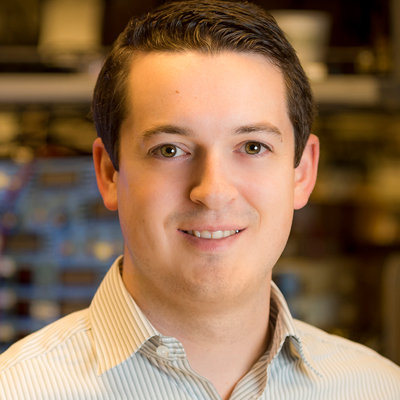Using biosensors to monitor health
Imagine a world in which healthcare decisions are made not only through observation of macroscopic symptoms at infrequent doctor's office visits, but are instead made together with the help of data collected from sensors that continuously monitor underlying physiology.
This approach to healthcare can be imagined similar to the way we now care for our cars. Today, we still need to bring our vehicles in for periodic oil-changes and check-ups with a mechanic, just as we do with our doctors. Decades ago, this was the only opportunity for your mechanic (doctor) to spot a potential problem and rectify it. Unfortunately, as many of us have found out, many automotive problems do not exhibit symptoms that are visible during routine check-ups, and instead only arise when it is too late; for example, your car is overheating on the side of the road. Fast forward to today, most new cars have hundreds of sensors that help to detect these problems before they are even visible to your mechanic. Your car will now notify you of a potential problem, and suggest a visit to your mechanic to preemptively address the problem. Unfortunately, the idea of preventive care has not yet been translated to healthcare in a truly meaningful way.
- The principal idea is this: let's outfit patients with biosensors that monitor the status performance of their bodies such that they can ensure they are living optimally, and preemptively address minor issues before they become major ones.
-
The Energy-Efficient Microsystems lab at University of California, San Diego, believe outfitting of patients with sensors has not yet happened due to current sensor obtrusiveness and lack of convenience. Few people like recharging batteries, and even fewer people like manually setting up wireless networks.
-
To achieve this vision of wireless, autonomous biomedical sensors, the lab has been researching ways to a) reduce the physical size of the sensors themselves, b) reduce the power necessary to power such sensors, and c) find better and more efficient ways to harvest ambient energy towards self-powering of such sensors.
-
Professor Mercier and colleagues have shown that there is a biologic battery found naturally in the inner-ear, and it is possible to use some of its energy to power a wireless sensor. They have been designing new energy-management circuits that are extremely efficient and sized to be compatible with anatomy, the world's lowest power sensor interfaces, and together with collaborators at University of California, San Diego, flexible, wearable electronic sensors.
Your donations will help Energy-Efficient Microsystems lab at University of California, San Diego, strive to design and develop biomedical sensors that are completely autonomous: that is, they can power themselves from ambient energy, and securely communicate with minimal setup required to a device like a smartphone or smart watch. In this manner, we can begin to integrate many sensors into your smart watch, your clothes, or even in your car seat or office chair. Eventually, we may also look to implant important sensors into the body; the challenge here is to ensure the implant procedure is minimally invasive (e.g., injectable electronics), and wireless communication is stable and secure.
Bio
Leading the Energy-Efficient Microsystems Group at University of California, San Diego, Dr. Mercier's research interests are to develop miniaturized electronic systems that interact with their environments in previously unimaginable ways.
For example, together with colleagues at MIT and the Universities of Washington and Arizona, Dr. Mercier developed a wireless bio-stimulation platform that weighed less than one gram, permitting integration with a live insect for untethered biological flight control applications.
Such developments not only demand innovation in many areas of circuit design (e.g., RF, analog, digital, and power electronics), but also require cross-layer optimizations with underlying processes and physical constraints (e.g., biology, chemistry, human physiology, proximity to ambient power sources, etc.).
The coalescence of circuit design and system considerations can enable many other new and potentially transformative classes of applications, including, for example, self-powered ubiquitous computing networks for smart infrastructure, miniaturized chemical sensors for diagnostics and monitoring of patients or the environment, and brain-computer interfaces for patients with neurological disorders.
In the News
Researchers power an implantable electronic device using an electrical potential natural battery deep in the inner ear
Publications
Awards
Graduate Teaching Award
The award is based on high student reviews and executed performance in ECE 283 (now called ECE 203): Biomedical Integrated Circuits and Systems


